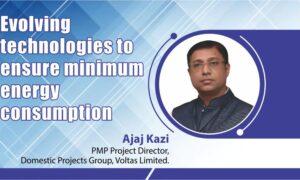Use of gas detectors incorporated into the BCS is essential for compliance with refrigerant safety requirements.
What active safety approaches are available to identify risks to protect the building from fire and gas leakages from HVAC systems installed?
There are several standards that dictate the requirements to guarantee safety when using HVAC systems. IEC 60335- 2-40 is e product standard for electrical heat pumps, ACs and dehumidifiers up to a certain refrigerant charge. EN 378 is the general standard that dictates safety and environmental requirements for refrigerating systems and heat pumps, generally used for high refrigerant charges.
In general terms, the measures included in these standards aim to avoid that a refrigerant leakage will reach a sufficient concentration to cause a fire if spreading close to components or devices that are a source of ignition, for example electric heaters or relays. Mechanical ventilation is one of the methods included in the safety standards that helps dilute the refrigerant and thus reduce its concentration. Another option involves isolating the components that are a source of ignition in an enclosure, as specified in standard IEC 60079-15. And of course, designing the system in a way that is hermetically sealed to avoid (or minimise) any refrigerant leakages is always important. Use of gas detectors incorporated into building control systems (BCS) is essential for compliance with refrigerant safety requirements. The more advanced the building’s network of monitoring and control systems, the more peace of mind there will be regarding health and safety.
Connectivity is a critical issue, so having alert systems for diagnosing and addressing risks before faults become accidents is essential. Are fire and infection safety aspects important from a training viewpoint to mitigate HVAC safety hazards?
Certainly. The Internet of things is permeating every aspect of daily life. It also has the potential to bring tremendous value to HVAC systems.
What we have learnt from the pandemic is that, in addition to researching and exploiting data to improve operation and performance, it is possible to shift the focus to system safety, preventing them from becoming, if poorly maintained, a source of hazard or pollution in confined spaces. For example, continuous monitoring of certain values such as relative humidity inside the systems, can help identify incipient wetting of surfaces where bacteria or microbes can more easily spread, or by measuring the pressure drop, the status of the filters installed can be evaluated with respect to the optimum conditions. These potentially risky conditions can generate warnings both for emergency responses and to plan more effective maintenance.
Currently, what innovations are suggested regarding the development process of software for HVAC safety? Do safety guidelines and equipment meet needs of current situations?
Unfortunately, in the current pandemic there has not been enough time yet to consolidate knowledge and develop best practices for the design of resilient systems. Designers need to shift from a prescriptive approach to a performance approach, developing software that is able to offer strategies that reduce risk. For example, regulatory references such as VDI 6022-1 can offer ideas for implementing operational and control logic for ventilation systemsfocusing on hygiene and safety. This may be a very good reference standard for systems that are ready for the era of the ‘new normal’.
What specific challenges for HVAC safety have come to the fore? What kinds of systems can be considered vital from safety viewpoint that HVAC technicians must be aware of now?
Previously, the paradigm for the design of a HVAC system was highest comfort at maximum efficiency. Since thepandemic,health comes first.
The goal will therefore be – to be able to work out a fair compromise between the demands for healthand energy efficiency, which certainly remains a cornerstone. IoT, advanced control logic, probes and sensors for IAQ, air purification devices and filtration systems are ‘must haves’ for the future.
Cookie Consent
We use cookies to personalize your experience. By continuing to visit this website you agree to our Terms & Conditions, Privacy Policy and Cookie Policy.














